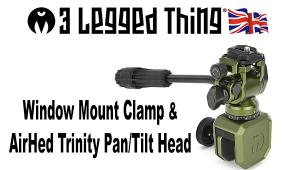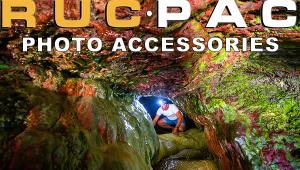Will this process be recommended for mirrorless too? I got the same duster from the article and wanted to use it on my A7ii due to some particles not coming out with my regular Air Rocket.
Thanks
The DataVac Electric Duster: Pro-Style Sensor Cleaning
Like most of you, I’ve been frustrated by the amount of dust that accumulates not only on my sensors but also on my cameras and lenses in general. It’s an ongoing battle. Take photos, clean cameras; take photos, clean cameras.

I use a lot of gear for the cleaning process. Included in my repertoire are lens paper, sensor cleaning swabs, denatured alcohol (I saw this used by a Nikon repair guy I watched work his magic recently during the Balloon Fiesta in Albuquerque), an air compressor, and even, on occasion, a vacuum cleaner. I have a thing about keeping my cameras clean (learned from friend Katsuhiko Tokunaga—arguably the most accomplished aviation photographer in the world today), and I’m pretty religious about it, even when I’m on the road.
Traveling a lot has always caused me frustration in not having ready access to an air compressor—which I consider a vital tool for the cleaning process. Some folks use canned air, but years ago, after hearing horror stories about what canned air chemistry can do to a very expensive sensor, I decided to take the bull by the horns and buy a real air compressor and throttle it back so that it would not blow the sensors completely out of my cameras.
After going through at least four different commercial compressors, I finally settled on a Sears Craftsman 3 gal/1 hp unit that’s fairly transportable (though it does weigh around 30 lbs) and comes with enough parts and pieces to accommodate just about any job requiring a little pressurized air. I did have to buy an air blowgun set—about $10—but that was about it.
The Sears setup worked great, but it was far too big, bulky, and heavy to schlep around while I was on the road. Additionally, there was always the issue of moisture collecting in the tank. This wasn’t a big difficulty, but I always had to remember to leave the tank relief valve open after use, and I always had to remember to check the compressed air for moisture before starting to clean my cameras. Regardless, it worked, and it worked well, and I still use it when I’m at home.

But when I’m on the road I now have a portable air compression/blower device that does about 99 percent of what the Sears unit does at one-tenth the size. At a price of about $39 (street), the DataVac Electric Duster is a bargain. Built out of steel, powered by a .75 peak horsepower electric motor, equipped with a generous 12-foot heavy-duty two conductor cord, and weighing a hefty but manageable 2.7 lbs, it’s well suited for what I need and use it for—which is on-the-road camera and lens cleaning.
It fits easily into one of my smaller camera bags. The only complaint I really have is the electric cord—which I find hard to coil into a manageable package. But that’s minor in the scheme of things.
The unit comes with several usable tools or attachments, including an air-pin-pointer, an air-concentrator nozzle, an air-flare nozzle, and a four-piece detailing tool kit. There are other accessories available as well, including a useful 3-foot flexible extension hose, but most of these aren’t necessary for the simple camera cleaning process.
You activate the unit by pressing an on/off switch mounted on the left side of the upper bell housing. It’s conveniently accessible using your thumb (assuming you’re right-handed). Just be forewarned—this unit is noisy. You probably won’t want to use it at 3am when sitting in a hotel room somewhere.
The air blast is substantial. However, there are ways to throttle it down with the various attachments. A serious note of caution here: the first time I hooked everything up and decided to give cleaning one of my sensors a shot I did so with grave reservations. Turned out the air blast was sufficient and that I didn’t need to get closer than an inch from the sensor—and even that was more than adequate. Additionally, maneuvering the duster with the tube attached was pretty easy. Most importantly, it did a fine job of getting rid of those pesky little dust particles that had led to the exercise in the first place.
One further warning: do not use the duster to clean your camera sensor if you have poor hand/eye coordination, any kind of handshake or tremble, or poor depth perception. Be very, very careful, use a lot of common sense, and always consider this a dust removal process of last resort. You might want to start with the air-concentrator nozzle before graduating to the detachable tube. When using the latter, incidentally, make sure it is firmly attached to the air-concentrator nozzle before initiating the cleaning process.
For what it’s worth, canned air is, to me, considerably chancier than this duster option. Not only might you scratch your sensor with a canned air extension tube, but the chance of puking canned air chemistry all over your sensor is a chance I refuse to take. According to the Nikon repair guy at the Balloon Fiesta, when the latter happens the sensor must be replaced—period.
Though not a highly sophisticated piece of equipment, the DataVac Electric Duster is indeed—as the company touts—a “green” alternative to throwaway canned air. Most importantly, it does remove dust from sensors and other parts of cameras and lenses and it does so in an expeditious fashion. Additionally, it’s highly portable, powerful, reasonably well built (in the U.S.A. in Suffern, New York), and there’s essentially no problem with condensation (there’s even a filter built into the intake orifice to clean the air before it’s run through the compressor/blower section).
Buy one if keeping your cameras and lenses clean is an issue. If you’re used to canned air but tired of buying a new can every few weeks or months, the DataVac Electric Duster offers a one-shot solution at a reasonable price. You’ll never use canned air again.
For further information, contact www.DataVacElectricDuster.com.
- Log in or register to post comments


















































